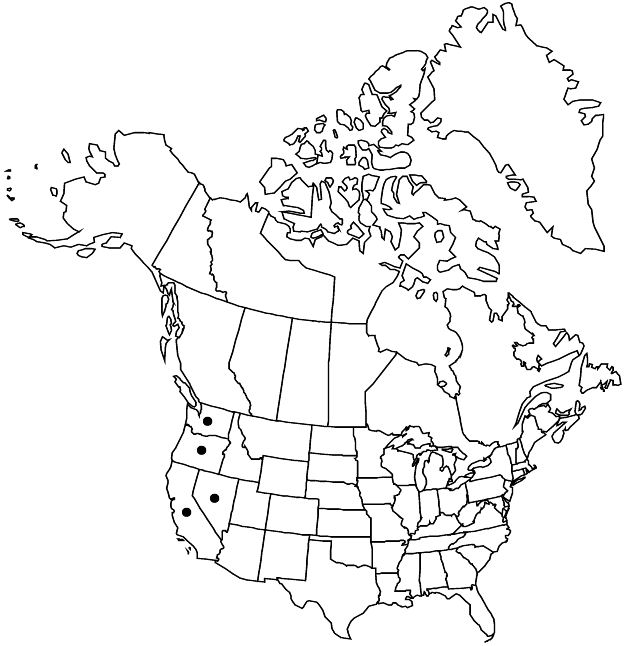Viola bakeri
Pittonia 3: 307. 1898.
Plants perennial, caulescent, not stoloniferous, 3–30 cm. Stems 1–4, usually erect, sometimes prostrate or decumbent, leafy proximally and distally, usually puberulent, from usually vertical, subligneous rhizome. Leaves basal and cauline; basal: 1–4; stipules adnate to petiole, forming 2 linearlanceolate wings, margins entire, apex of each wing free, acute to acuminate; petiole 1–15.4 cm, glabrous or puberulent; blade lanceolate, oblanceolate, or elliptic, rarely ovate, 1.8–8.8 × 0.7–3.9 cm, thin, base attenuate, often oblique, margins usually entire, sometimes with a few sharp teeth or crenulate, ciliate, apex acute to obtuse, mucronulate, surfaces glabrous or puberulent on margins or veins; cauline similar to basal except: stipules ovate to lanceolate, margins entire or lacerate, sometimes with glandular projections, apex with 2–3 projections; petiole 1.5–7.5 cm; blade 1.9–6.7 × 0.5–1.6 cm. Peduncles 1.5–11.6 cm, glabrous or pubescent. Flowers: sepals lanceolate, margins eciliate, auricles 0.5–1 mm; petals deep lemon-yellow adaxially, upper 2 often brownish purple abaxially, lower 3 dark-brown to brownish purple-veined, lateral 2 sparsely bearded, lowest 6–14 mm, spur yellow, gibbous, 1–2 mm; style head bearded; cleistogamous flowers axillary. Capsules spherical to ovoid, 5–10 mm, usually glabrous, rarely finely puberulent. Seeds light to medium brown or dark redbrown, 2.6–3.1 mm, elaiosome not covering funiculus. 2n = 48.
Phenology: Flowering May–Jul.
Habitat: Wet and dry places in openings of coniferous forests
Elevation: 900–3800 m
Distribution

Calif., Nev., Oreg., Wash.
Discussion
M. S. Baker (1957) wrote that Viola bakeri flowers were often without a brownish tinge on the back. Subsequent collections have shown that the upper two petals of V. bakeri are often brownish purple abaxially and thus this characteristic cannot be used to distinguish V. bakeri from V. praemorsa, as previously done (P. A. Munz 1959; C. L. Hitchcock et al. 1955–1969, vol. 3).
Greene wrote in his description of Viola bakeri that the whole plant was glabrous; he did not mention leaf margins. M. S. Baker (1957) examined the type specimen at UC and apparently was the first to document that its leaf margins are entire. He also noted that under magnification the leaves are ciliate and more or less puberulent. D. M. Fabijan et al. (1987) stated that margins were always entire and ciliate and more or less pubescent throughout. Some collections of V. bakeri
from California have leaves with a sharp point or two on the margin, or crenulations on some portion of the basal or cauline blade margins.
Selected References
None.
Lower Taxa
"thick" is not a number. "narrow" is not a number.